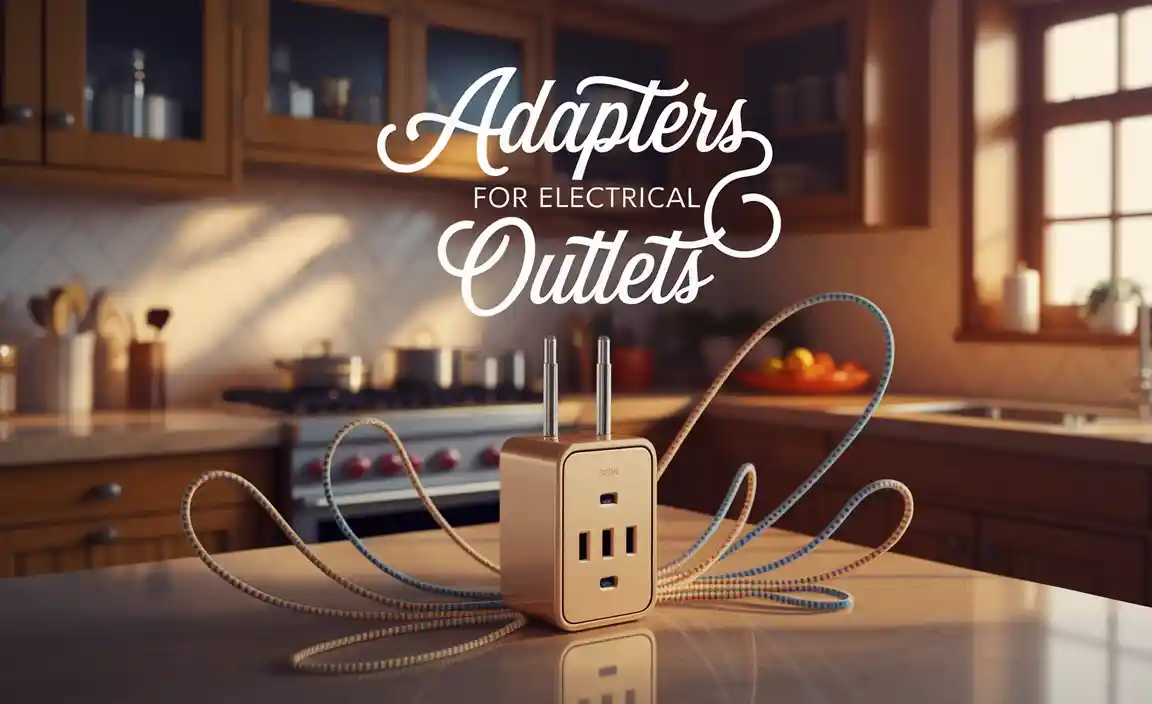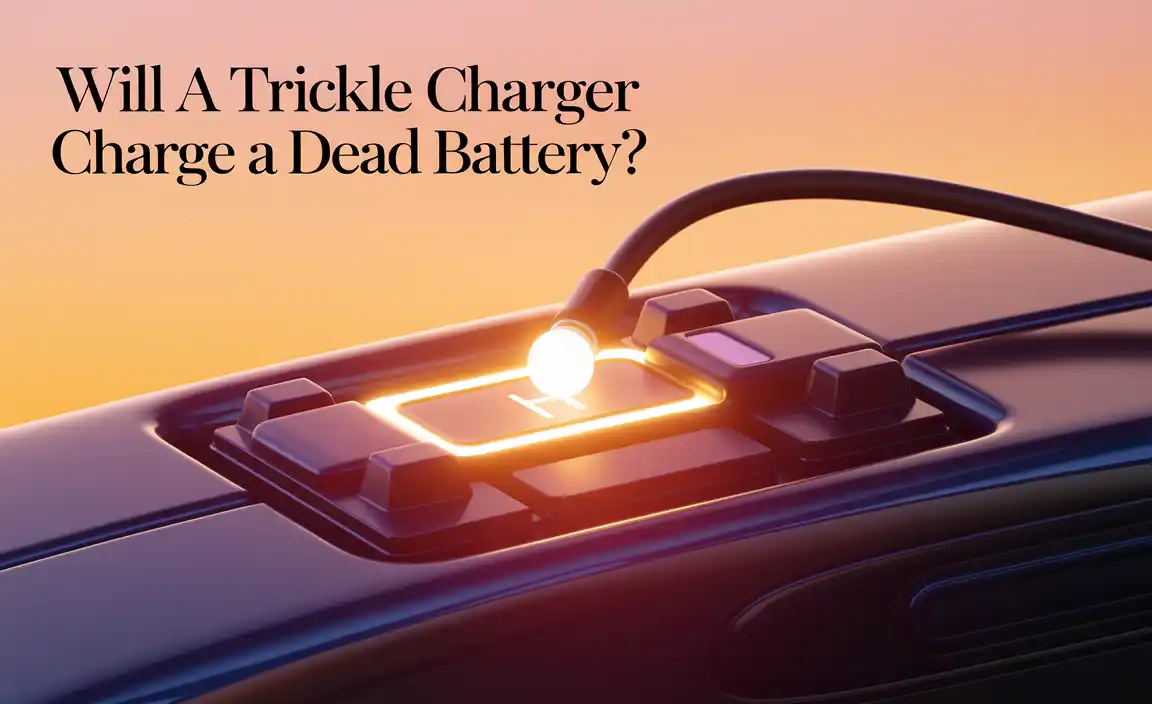The best LiFePO4 battery for your electric bike offers longer life, faster charging, and enhanced safety compared to other options. This guide makes choosing and understanding your LiFePO4 e-bike battery simple, ensuring you get the right power for your rides.
LiFePO4 Batteries for Electric Bikes: The Essential Power Upgrade
Thinking about powering your electric bike or upgrading its battery? It can feel a bit confusing with so many choices. But don’t worry, lots of people wonder about the best way to get reliable power for their e-bikes. We’ll break down what makes LiFePO4 batteries a great choice and help you understand them easily. This guide will show you how to pick the right one and why it’s a smart move. Get ready to boost your ride with the right power!
Why LiFePO4 Batteries are a Game-Changer for E-Bikes
When it comes to electric bikes, power is everything. You want a battery that lasts, charges quickly, and keeps you safe. LiFePO4 (Lithium Iron Phosphate) batteries are becoming the go-to choice for many e-bike riders, and for good reason. They offer a fantastic blend of performance, safety, and longevity that other battery types just can’t match.
Imagine riding further without worrying about running out of juice, or being able to recharge your battery much faster when you do need a top-up. That’s the kind of convenience a LiFePO4 battery can bring to your electric bike experience. Plus, knowing your battery is designed with safety in mind gives you peace of mind on every journey.
Understanding LiFePO4: The Basics
LiFePO4 is a specific type of lithium-ion battery. What makes it stand out is its chemistry. Instead of using cobalt like some other lithium-ion batteries, it uses iron phosphate (P) as its cathode material. This might sound technical, but it translates into some big advantages:
- Safety: LiFePO4 batteries are known for their thermal stability. This means they are much less likely to overheat or catch fire, even if slightly damaged or overcharged. This is a huge plus for any portable electronic device, especially one used outdoors.
- Lifespan: These batteries can handle a lot more charge and discharge cycles than many other battery types. This means they can last for years, even with regular use, saving you money in the long run.
- Performance: They can deliver high power output, which is great for the demands of an electric bike, and they maintain a steady voltage during discharge, meaning consistent power to your motor.
- Environmental Friendliness: They don’t contain harmful heavy metals like cobalt, making them a more eco-friendly option.
Comparing LiFePO4 to Other E-Bike Battery Types
To really appreciate LiFePO4, it helps to see how it stacks up against other common battery technologies used in e-bikes.
Lithium-Ion (Li-ion) – NMC/NCA
These are the most common lithium-ion batteries you’ll find in many electronics and some e-bikes. They use nickel manganese cobalt (NMC) or nickel cobalt aluminum (NCA) in their chemistry.
- Pros: High energy density (meaning more power for their weight), good performance.
- Cons: Can be less stable and more prone to thermal runaway if damaged or manufactured poorly. Lifespan is generally shorter than LiFePO4. Cobalt is also a concern from an ethical and environmental standpoint.
Lead-Acid Batteries
These are the older, heavier batteries often seen in traditional vehicles. They are sometimes used in very basic or low-cost e-bikes.
- Pros: Cheaper upfront cost, readily available.
- Cons: Very heavy, significantly shorter lifespan, poor performance in terms of consistent power, take a long time to charge, and contain hazardous materials. They are generally not recommended for modern e-bikes where performance and weight matter.
LiFePO4 vs. Other Lithium-Ion (NMC/NCA) for E-Bikes
For electric bikes, the differences are quite important:
Safety: LiFePO4 wins. Their inherent stability reduces risks significantly. This is paramount when you’re out riding.
Lifespan: LiFePO4 typically lasts much longer. You’re looking at 2000-5000 charge cycles versus 500-1000 for standard Li-ion. This means fewer battery replacements over the life of your e-bike.
Performance: Both can deliver good power, but LiFePO4 maintains a more consistent voltage as it discharges. This means your bike’s motor will feel strong for longer before the power starts to fade noticeably.
Weight: LiFePO4 batteries are generally a bit heavier and less energy-dense than NMC/NCA batteries for the same capacity. However, the advancements in LiFePO4 cell design are closing this gap. For many riders, the safety and lifespan benefits outweigh a slight increase in weight.
Cost: LiFePO4 batteries can have a higher upfront cost. However, when you factor in their much longer lifespan and fewer replacements needed, they often prove to be more cost-effective in the long run.
Key Features to Look For in a LiFePO4 E-Bike Battery
Not all LiFePO4 batteries are created equal. To make sure you get the best one for your electric bike, consider these important features:
1. Voltage (V) and Capacity (Ah/Wh)
These are the most crucial specs. They determine how fast your bike can go and how far it can travel on a single charge.
- Voltage (V): Most e-bikes use 36V or 48V systems. It’s vital to match the battery’s voltage to your bike’s motor and controller. Using a battery with the wrong voltage can damage your system.
- Capacity (Ah – Amp Hours): Amp hours tell you how much current the battery can deliver over time. Higher Ah means more range.
- Watt-Hours (Wh): This is often the best way to compare range. It’s calculated by multiplying Voltage by Amp Hours (V * Ah = Wh). A higher Wh rating means more potential range.
2. Battery Management System (BMS)
A Battery Management System (BMS) is like the brain of your LiFePO4 battery. It protects the battery from common issues.
A good BMS will typically protect against:
- Over-charging
- Over-discharging
- Overheating
- Short circuits
- Cell balancing (ensuring all cells charge and discharge evenly for optimal life)
Always ensure the LiFePO4 battery you choose has a robust BMS. It’s a critical safety and longevity feature. Many reputable manufacturers will detail the BMS’s protection features.
3. Cycle Life
As mentioned, LiFePO4 batteries boast impressive cycle lives. Look for batteries rated for at least 2000-3000 cycles. This means you can charge and discharge the battery that many times before its capacity significantly degrades (usually defined as dropping to 80% of its original capacity).
4. Discharge Rate (C-Rating)
The C-rating tells you how quickly the battery can safely discharge its energy. For an e-bike, you’ll want a battery that can handle the peak power demands of your motor, especially when accelerating or going uphill.
A 1C rating means the battery can discharge its full capacity in one hour. A 10C rating means it can discharge 10 times that current. For e-bikes, a continuous discharge rate of 10C to 20C is usually sufficient, with burst rates being even higher.
5. Charging Time and Charger Compatibility
LiFePO4 batteries can be charged relatively quickly. Check the recommended charging current and the time it takes to fully charge. Crucially, make sure the charger is specifically designed for LiFePO4 batteries and your battery’s voltage, as using the wrong charger can be dangerous and damage the battery.
You can find compatible LiFePO4 battery chargers from various reputable suppliers. Always use the charger recommended or provided with the battery.
6. Physical Size and Mounting
Consider where the battery will fit on your e-bike. Most e-bike batteries are designed to fit into existing mounts, like downtube bottle cage bosses or rear racks. Measure your available space and check the battery dimensions carefully.
- Downtube Batteries: Often shaped like a water bottle, these are common and help with weight distribution.
- Rear Rack Batteries: These are mounted on a rack over the rear wheel, often offering higher capacities.
- Integrated Batteries: Some modern e-bikes have batteries built directly into the frame.
7. Water and Dust Resistance (IP Rating)
E-bikes are used in various weather conditions. Look for batteries with a good IP (Ingress Protection) rating. An IP65 rating, for example, means it’s protected from dust and low-pressure water jets, making it suitable for most riding conditions.
Choosing the Right LiFePO4 Battery for Your E-Bike: A Step-by-Step Guide
Picking the perfect LiFePO4 battery doesn’t have to be complicated. Follow these steps:
Step 1: Check Your E-Bike’s Specifications
This is the most important first step. Look at your current battery or consult your e-bike’s manual. You need to know:
- Voltage: What voltage does your motor and controller require (e.g., 36V, 48V)?
- Connector Type: What kind of plug does your battery use to connect to the motor and charger? Common types include XT60, XT90, Anderson connectors, or proprietary connectors.
- Physical Fit: Where does the battery mount, and what are the dimensions of the current battery?
Pro Tip: If you’re unsure, contact your e-bike manufacturer or a reputable e-bike repair shop. They can help you find the exact specs.
Step 2: Determine Your Range Needs
How far do you typically ride on a single charge? Consider your longest commute, weekend ride, or the terrain you usually tackle (hilly areas use more power).
- Short Commutes (under 15 miles): A battery in the 10-15 Ah (360-720 Wh for 36V) range might be sufficient.
- Moderate Riding (15-30 miles): Aim for 15-20 Ah (720-960 Wh for 36V).
- Long-Distance or Heavy Use (30+ miles): Look for 20 Ah or more (960+ Wh for 36V), or consider a higher voltage system if possible.
Remember, Wh is the best indicator for range. A 48V 15Ah battery (720Wh) will offer similar potential range to a 36V 20Ah battery (720Wh).
Step 3: Research Reputable Brands and Suppliers
When buying batteries, especially high-performance ones like LiFePO4, quality matters. Look for well-known brands that have good reviews and offer warranties.
Reliable suppliers often provide detailed specifications, clear product images, and excellent customer support. It’s also wise to buy from a supplier that specializes in batteries or e-bike components.
Step 4: Compare Specifications and Features
Once you have a few options, compare them based on:
- Voltage and Capacity (must match your bike)
- BMS features
- Cycle life rating
- Discharge rate (C-rating)
- Connector type
- Physical dimensions and weight
- IP rating
- Warranty period
Step 5: Check Price and Value
While you don’t want to go for the cheapest option, consider the long-term value.
- Upfront Cost: LiFePO4 batteries are an investment.
- Cost Per Wh: Divide the price by the Watt-hours to get a rough idea of $/Wh.
- Longevity: A battery that lasts longer will be cheaper over time compared to one that needs frequent replacement.
Don’t forget to factor in the cost of a compatible charger if it’s not included.
Step 6: Read Reviews and Ask for Recommendations
See what other e-bike owners are saying about specific batteries or brands. Online forums, e-bike communities, and product reviews can offer valuable insights into real-world performance and reliability.
Speaking to other riders or local e-bike shops can also provide great firsthand advice.
LiFePO4 E-Bike Battery Specifications at a Glance
Here’s a quick comparison table to help visualize common LiFePO4 battery specs. Note that specific models will vary.
| Feature | Typical Range for E-Bikes | Why It Matters |
|---|---|---|
| Voltage (V) | 36V, 48V, 52V | Must match your e-bike’s motor and controller for proper operation and to avoid damage. |
| Capacity (Ah) | 10Ah – 30Ah+ | Higher Ah means more range. |
| Watt-Hours (Wh) | 360Wh – 1500Wh+ (V x Ah) | The most accurate measure of total energy storage and potential range. |
| Cycle Life | 2000 – 5000+ cycles | How many times the battery can be charged/discharged before significant degradation. Longer life means better value. |
| Continuous Discharge Rate (C) | 10C – 20C+ | The maximum current the battery can safely provide continuously. Needs to meet your motor’s peak demand. |
| BMS Protections | Over-charge, over-discharge, over-current, short circuit, thermal, cell balancing | Essential for safety, longevity, and maintaining battery health. |
| Weight | 5 lbs – 20 lbs+ | Affects the overall weight of the bike and handling. LiFePO4 is typically heavier than NMC for the same capacity. |
| Operating Temperature | Charging: 0°C to 45°C (32°F to 113°F) Discharging: -20°C to 60°C (-4°F to 140°F) |
Important for riding in various climates. Extreme temperatures can affect performance and lifespan. |
Installation and Maintenance Tips for Your LiFePO4 Battery
Once you’ve got your new LiFePO4 battery, proper installation and care are key to unlocking its full potential and ensuring a long, safe life.
Installation Basics
If your battery is a direct replacement for your old one and uses the same mounting and connectors, installation is usually straightforward.
- Safety First: Always ensure the e-bike is powered off and the battery is disconnected before starting any work. Wear safety glasses.
- Remove Old Battery: Carefully detach your old battery. It might be secured with bolts or a locking mechanism.
- Mount New Battery: Place the new LiFePO4 battery in its designated spot. Secure it firmly to prevent movement.
- Connect Wires: Connect the battery’s output cable to your e-bike’s controller and the charging port cable to the charger. Ensure the connectors are correct and secure. Refer to your e-bike manual for specific wiring instructions if needed.
- Power On and Test: Turn on the e-bike and check that the battery indicator shows a charge. Do a short, slow test ride in a safe area to ensure everything is working correctly.
Important Note: If you are converting an e-bike to LiFePO4 power or are unsure about any step, it’s best to consult a professional e-bike mechanic. Incorrect installation can damage your bike or the battery.
LiFePO4 Battery Maintenance for Longevity
LiFePO




